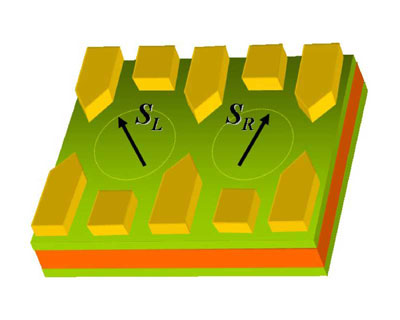| May 02, 2013 |
Reducing noise in qubit arrays
|
|
(Nanowerk News) If quantum computers are ever to be built, qubits will have to be made more robust and more numerous. Qubits, the quantum equivalent of the bits used in conventional computers, can easily lose their orientation in a process called decoherence when confronted with a noisy environment. Also, if qubits are to enable true quantum computing for things such as such as factoring or searching, they will have to link up in large arrays of memory units and logical gates. New work by scientists at the Joint Quantum Institute addresses both of these concerns---noise reduction and scalability.
|
|
Qubits are systems which can exist in a superposition of two quantum states simultaneously. This allows an ensemble of qubits greater computational power than a comparable number of conventional bits. Unfortunately interactions between a qubit and its environment threaten to collapse the qubit’s superposition into one definite state, precisely undoing the type of quantum behavior at the heart of quantum computation. In other words, environmental contamination---what could be lumped under the heading of “noise”---can trigger decoherence. Too much noise, and the computation stops.
|
 |
| Two electrons (represented by the left and right arrows, suggesting spin orientation) in a pair of quantum dots under control of nearby electrodes.
|
|
A promising qubit candidate is one in which two tiny semiconducting realms, referred to as quantum dots, are controlled with such precision that only one unattached electron, more or less, is allowed to reside in each realm. Eventually the dots might be manufactured easily in large arrays using the same lithographic technology used to make current microchips. In a “spin qubit,” two nearby electrons, each in its own confinement area and each with its own quantum spin (a type of intrinsic angular momentum), can be considered as a composite entity, which in turn can exist in two allowable spin states known as “singlet” and “triplet,”.
|
|
The new JQI theoretical effort shows how the two of the most important forms of noise can be controlled. Furthermore, the researchers show that this singlet-triplet qubit noise-reduction scheme can be used with logical gates between pairs of qubits and not just single qubits acting as memory units. The JQI work is published in the 5 April 2013 issue of the journal Physical Review Letters ("Noise-Resistant Control for a Spin Qubit Array").
|
|
Many years of working with quantum dots has taught scientists and engineers how to manipulate electron movement and spin orientation with great finesse. But for storing quantum information in qubits for long periods and for processing this information in the quantum equivalent of microchip processors (quantum logic gates will be built up from sophisticated combinations of two or more qubits) decoherence has be kept at bay.
|
|
One of the JQI scientists in the new study, Lev Bishop, says that most likely the two greatest forms of noise in quantum dots are caused by (1) the disruptive interactions between the electron pair and the nuclei of the underlying atoms that make up the quantum dot and (2) the fluctuation of electric charge near the quantum dots.
|
|
The JQI study shows that both of these forms of noise can be combatted with a judicious set of voltage pulses applied to the electrodes used to control the electrons in the quantum dots. This solution, inspired by efforts to produce sharper images in medical nuclear magnetic imaging, is summarized in this way by Jason Kestner, the lead author on the JQI paper: “Our work shows how to pulse the controlling voltages such that the quantum state can be manipulated while automatically self-correcting for the influence of the random background. Basically, we change the state in several steps and each step has an unknown error, but we know exactly how that error must be related to all of the other errors. We use that relationship to design the sequence of steps as a whole so that the individual errors push the quantum state in different directions and are guaranteed to cancel each other in the end.”
|
|
In an earlier work, the JQI scientists used a scheme like this to reduce noise in a qubit coming from nuclear interactions. But the new report is the first to extend the technique to cover the other form of noise as well, the one coming from charge fluctuations. This is also the first time theorists have shown how the noise-reducing pulses can apply not just to single qubits but also to qubits linked up to form logic gates.
|
|
This noise reduction protocol is good news for those seeking to scale up rudimentary quantum computers. “Our results boost the overall gate fidelity of one of the major candidate systems for solid-state quantum computation,” said Bishop.
|

